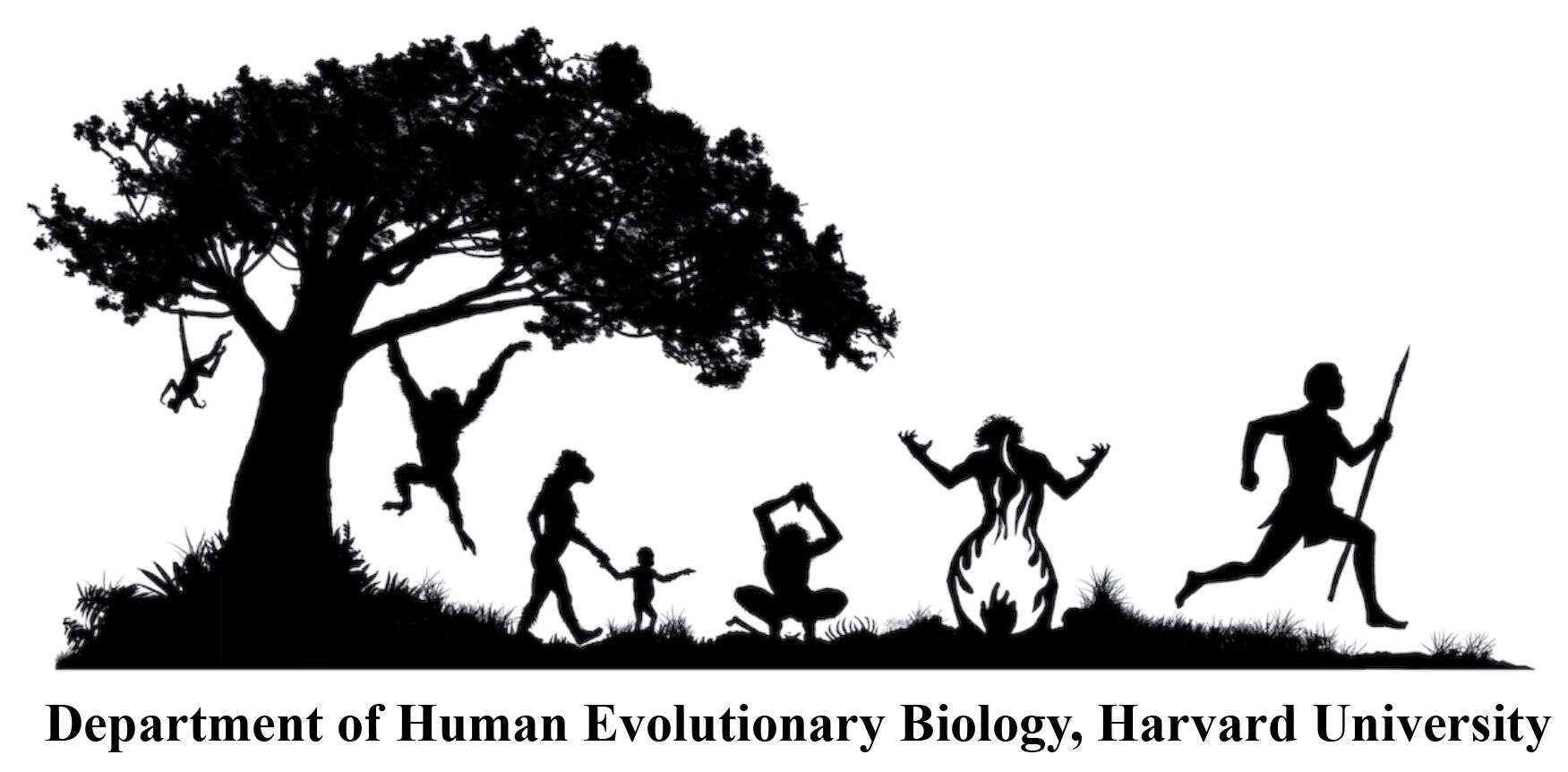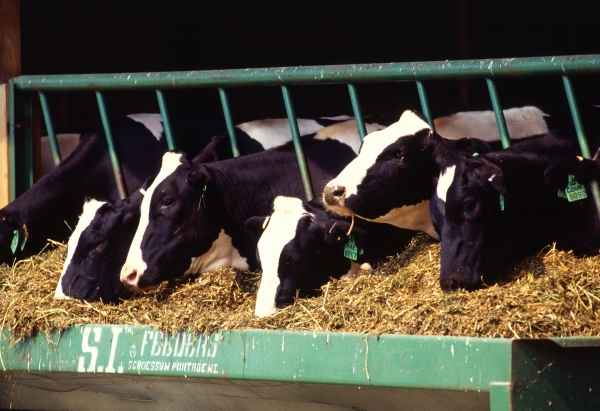Fetal Daughters Influence Mother's Milk
Citation
Hinde, K., Carpenter, A., Clay, J., Bradford B. 2013. Holsteins Favor Heifers, Not Bulls: Biased Milk Production Programmed during Pregnancy as a Function of Fetal Sex. PLOS One.
The Study in Brief
 |
|
FIGURE 1: Holstein Dairy Cow |
Using 2.39 million lactation records from 1.49 million dairy cows, we demonstrate that the sex of the fetus influences the capacity of the mammary gland to synthesize milk during lactation. Cows favor daughters, producing significantly more milk for daughters than for sons across lactation. Using a sub-sample of this dataset (N=113,750 subjects) we further demonstrate that the effects of fetal sex interact dynamically across lactations, whereby the sex of the fetus being gestated can enhance or diminish the production of milk during an established lactation. Moreover the sex of the fetus gestated on the first pregnancy has persistent consequences for milk synthesis on the second lactation.
Background
Mammalian females pay high energetic costs for reproduction. Generally the greatest costs are imposed by lactation, because the synthesis of milk requires mobilization of bodily reserves to nourish developing young. More succinctly, females dissolve parts of themselves to nourish their babies. In evolutionary biology, substantial research has been dedicated to understanding how mothers direct care and nourishment to their young in relation to their own condition and where they are at in their reproductive careers. Infant characteristics may also influence how mothers invest, and the characteristic of greatest interest to evolutionary biologists has been whether they are rearing a son or a daughter. Biologists have proposed numerous hypotheses “for sex-biased maternal investment,” but the most well-known and investigated remains the Trivers-Willard hypothesis. Trivers and Willard hypothesized that a female, as a function of her condition, is expected to preferentially allocate resources to the sex that provides greater marginal return on that investment. In mating systems with male-male competition, they predicted that good condition females would favor sons because males are thought to benefit more from additional investment than do daughters. However, few studies have directly addressed sex-biased milk synthesis, and none have investigated whether fetal sex has an effect during gestation when the mammary gland is hormonally prepared for later milk production.
Genesis of the Collaboration
On August 27th, 2012, Katie Hinde tweeted a link to her blogpost on sex-biased milk synthesis, highlighting the theoretical perspectives and reviewing the empirical research. The essay noted that studies had not specifically investigated the possibility of mammary gland programming during pregnancy due to the sex of the fetus. A few days later, Barry Bradford twitter direct messaged her, suggesting a collaborative project in dairy cows; she agreed enthusiastically. In this way, our study serves as an important example of the collaborative opportunities afforded scientists engaged in online social networks and science outreach activities. Subsequently Gail Carpenter, graduate student and giant dataset programming extraordinaire, and John Clay, Director of the Dairy Records Management Systems, joined the project.
The Approach
We investigated sex-biased milk synthesis in the Holstein breed of Bos taurus. Standardized husbandry practices, systematic milking procedures, detailed record-keeping, and large sample sizes make the dairy cow a powerful model for the exploration of milk synthesis from both mechanistic and evolutionary perspectives. Notably, because calves are removed from the dam within hours of parturition, this model system allowed us to investigate mechanisms during pregnancy of sex-biased milk synthesis independent of post-natal maternal care and suckling behavior. Additionally, dairy cows are often concurrently pregnant and lactating, typically 200+ days of the 305-day lactation, allowing us to explore how the sex of a fetus may affect an already established lactation. Importantly, bulls are much bigger than heifers, and aurochs, the ancestor of cows, were characterized by male-male competition for access to mates so cows make a good candidate for investigating potential sex-biased maternal investment. We acquired all lactation records from 1995 to 1999 in the database managed by Dairy Records Management Systems producing a large (2.39 million lactation, 1.49 cows) dataset as well as a smaller conservative, longitudinal dataset of the first and second lactations for individual cows (N=113,750 cows).
FIGURE 2: Holstein Dairy Cow
Photo credit: Scott Bauer /USDA
Creative Commons license
Results
Holsteins biased milk production in favor of daughters not sons. Cows produced significantly more milk over the 305 days of standard lactation after gestating a daughter. This effect was strongest in cows on their first lactation, likely because substantial changes occur in the mammary gland the first time it “gears up” for milk synthesis. The percent fat and protein in milk did not differ between cows that had gestated a son or daughter, so the “quality” of milk was the same. But because the “quantity” was higher after gestating a daughter, the total kilograms of milk fat and protein after gestating a daughter were higher than after gestating a son. Moreover these effects had complex interactions across lactations (Figure 3). The sex of the fetus on the first pregnancy not only influenced milk on the first lactation, so did the fetus on the second pregnancy because first lactation and second pregnancy overlapped in time. Cows that gestated a son and then another son synthesized significantly less milk on the first lactation. Cows that first gestated a son and then a daughter on the second pregnancy, could partially “rescue” milk production, but remained substantially lower than for cows that had a daughter on their first pregnancy. Additionally cows that had a son on their first pregnancy were handicapped in their milk production even on their second lactation, especially if they also had a son on their second pregnancy. Specifically, cows with two daughters back-to-back produced ~445 kgs more milk across the first two lactations than did cows with back-to-back sons.
Significance
Our results, for the first time, identify a dramatic and sustained programming of mammary function by offspring sex in utero. Maternal nutrition and hormones are known to have pronounced and long-term effects on offspring, but the ways in which offspring has sustained physiological effects on mom are less known. How does the fetus mechanistically influence milk synthesis? It’s likely that hormones from the fetus and placenta may differ between fetal sons and daughters, subsequently enter the maternal bloodstream and affect the milk producing cells in the mammary gland.
One evolutionary explanation is that mammalian mothers may have physiological adaptations to respond to fetal daughters. More milk for daughters may allow them to mature faster and initiate reproduction at relatively younger ages than do sons. A daughter’s lifetime reproductive output, a target of natural selection, is limited by time because pregnancy and lactation are of a largely fixed duration. In species in which males compete for access to females, males generally have a longer period of development before reproducing, so they have more time to compensate for deficits in the milk they received from their mother. As such mothers may be able “under-invest” in a son with relatively less consequence for the number of offspring he will go on to sire.
Notably, investigations of sex differences prioritize the role of the mother and sex-biased allocation of maternal resources. More often overlooked are mechanisms within offspring that may be sexually-differentiated. In this way, daughter-biased milk synthesis may not necessarily reflect adaptations in the mother, but instead may be adaptations in the fetus that are able to physiologically manipulate maternal physiology. Daughters may be better able to send hormonal signals to affect the mammary gland, whereas sons are constrained in their production of such hormones. We still don’t know. But one thing these data suggest is that uniformly biased milk production that favors daughters across maternal conditions does not support the Trivers-Willard hypothesis, opening the door for consideration of the many other hypotheses about sex-biased investment.
Real World Implications
Dairy herd management decisions can be informed by the effects we report here. Artificial insemination is standard practice in dairying and sex-selected semen is an option. Rough “back of the napkin” calculations, taking into account the current wholesale value of milk, the number of 2-year old heifers added to US dairy herds annually, the production advantage across the first two lactations of conceiving a daughter on the first pregnancy, and the increased probability of conceiving a daughter from sex-selected semen, suggests a gross value in the neighborhood of $200 million in milk production across the first two lactations in the United States alone. Organic dairy farmers, because they do not use synthetic hormones to increase milk production, may be especially keen to consider techniques to influence the conception of daughters.





